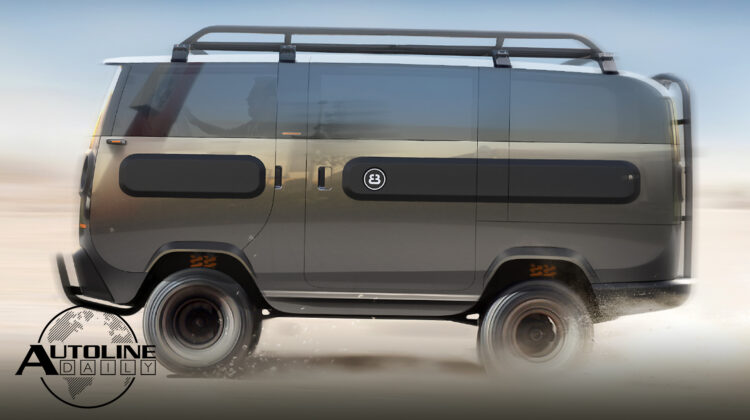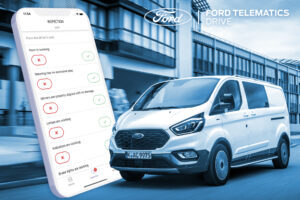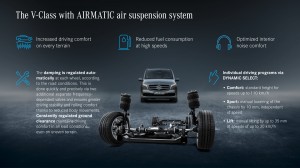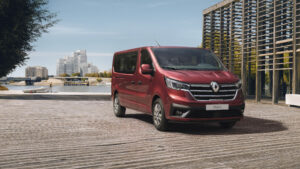
Listen to “AD #2951 – Honda Buying Tesla EV Credits; Citroen Says Polestar Logo Too Similar; German Startup Develops Unique EV” on Spreaker.
Follow us on social media:
Runtime: 9:34
0:07 Honda Has to Buy Tesla EV Credits
0:55 Tesla Confirms FSD for Canada & Norway
2:25 Does Future Hold Just Two Vehicle Segments?
4:22 Citroen Goes After Polestar for Its Chevron Logo
5:46 Ford Offers Brand Neutral Commercial Vehicle App
6:18 Mercedes Adds Air Suspension to V-Class
6:56 Renault Refreshes the Trafic Van
7:47 German Startup Develops Unique EV
Visit our sponsors to thank them for their support of Autoline Daily: Bridgestone, Hyundai and Intrepid Control Systems.
This is Autoline Daily, the show dedicated to enthusiasts of the global automotive industry.
HONDA HAS TO BUY EV CREDITS FROM TESLA
We never thought we’d see this happen. Honda is in danger of not meeting European CO2 standards, so it’s going to have to buy EV credits from Tesla. Even though Honda plans to sell only hybrids and electrics in Europe starting in 2022, it’s missing those standards right now. And while it already sells an electric city car, called the Honda e, in the EU, it’s a low volume car. Only 10,000 will be sold a year. Tesla reportedly has a deal to sell $2 billion worth of credits to FCA, and now Honda is only going to add to that total. So far this year Tesla collected $1.1 billion in EV credits. In fact, if not for those credits, Tesla would have lost $600 million this year instead of posting a net profit.
TESLA EXPANDING FSD TO CANADA & NORWAY
And in other Tesla news, Elon Musk confirmed that Canada and Norway will be the next countries to receive its Full Self Driving beta update. He tweeted it will expand to those countries after the U.S. gets out of early beta. While he didn’t provide a time frame, Musk previously said that the U.S. should get out of early beta in December. The update allows for autonomous turns at intersections and automatic lane changes on city streets. And when combined with Navigate on Autopilot, owners can set a destination and the car will drive itself to the location. However, Tesla warns that drivers must constantly pay attention and keep their hands on the wheel at all times.
DOES THE FUTURE HOLD JUST TWO VEHICLE SEGMENTS?
New vehicles keep getting more and more expensive. According to Kelley Blue Book, the average transaction price for a new car is over $38,000 in the U.S. So why do prices continue to climb? On Autoline After Hours, Charlie Chesbrough, the Chief Economist at Cox Automotive, explained what’s going on.
“Well, I think there’s probably two answers to that. Over the short-term or near-term, it’s a low supply environment with relatively strong demand, so the industry doesn’t have to go aggressive on incentives. They can sit back a little bit and not have to really put money on the hood of these vehicles. So, those prices are a little bit higher. But over the longer term for the industry, as you know John, it’s always technological components that add tons and tons of cost to these vehicles. Everybody loves them, people want them for the most part, I think there is room in the market for an AM Radio, rolled-up window vehicle. Maybe the Chinese will make it to come in below a $10,000 price point. But it’s all of these bells and whistles on these vehicles and all these technological components that are really adding in a lot of inflation on these vehicles, that I think we’ll see vehicle prices continue to rise more rapidly than incomes. It’s just the situation we’re in as an industry, they’re going to get more and more expensive. I’ve been saying this internally to our own team, you know 20 years from now, we may be looking at only two vehicle segments in the vehicle market, luxury and used. With the idea being, that the very fact you can afford to buy a vehicle, as expensive as it is and insure it and everything else, it must be a luxury type purchase. The whole concept of all these different price points, might be going by the wayside as these things get even more expensive.”
Only luxury and used segments in the future? It sounds crazy but what do you think? Let us know in the comments.
CITROEN GOES AFTER POLESTAR FOR CHEVRON LOGO
While Citroen’s and Polestar’s logos both feature two chevrons, they don’t look similar. But Citroen felt otherwise, so it took Polestar to court in France. And while the court agreed it isn’t likely the logos would get mistaken for one another, it still ruled in Citroen’s favor. Citroen has been using its double-chevron logo since it was founded in 1919. The court also considered that Citroen created a logo for its DS division in 2014 based around chevrons. And it pointed out that Polestar redesigned its logo in 2017, a decade after Citroen last applied to trademark its logo. Because of that, the judge fined Polestar about $175,000 and ruled that Polestar can’t sell vehicles in France for six months. But here’s the kicker… it doesn’t matter. Polestar doesn’t operate in France and it doesn’t have any plans to sell vehicles in the country. While it might seem silly for Citroen to go to court over this, it has to protect its patents, so it doesn’t set a precedent to have its trademarks infringed upon.
FORD OFFERS BRAND NEUTRAL COMMERCIAL VEHICLE APP
Ford is serious about providing mobility services–so much so that it developed an app for fleet managers that can work with any brand of vehicle, not just Fords. The app can show fleet managers who is driving which vehicle and how they’re driving. It tracks vehicle performance, fuel efficiency, and any damage and reports that directly to the fleet managers using Ford’s Telematics system. Ford is rolling the app out across Europe and it’s available in English, French, German, Italian and Spanish.
MERCEDES ADDS AIR SUSPENSION TO V-CLASS VAN
Mercedes-Benz is pumping a little more luxury into its V-Class van. It’s now available with air ride suspension. With dampers at all four corners, the system can keep the suspension level at a constant height – even when loaded – lower it by 10mm, which happens automatically at higher speed or when put in “sport” mode or raise it by 35mm for going over rough roads. The air suspension is not only available for the V-Class, but also the Vito and eVito Tourer, the Marco Polo camper van and the all-electric EQV.
RENAULT TRAFIC REFRESHED
Speaking of vans, Renault introduced the refreshed Trafic, which is celebrating its 40th anniversary this year. Styling is pretty similar to the outgoing model, but the grille, headlamps and lower front fascia have all been massaged. The interior features an all-new dashboard with a horizontal strip that blends into the door and an 8-inch display screen. There’s still a number of rear seating combinations with space for up to 9 passengers and a total storage volume of 86 liters. The new Trafic is only available with a diesel engine, which comes in three power outputs; 110, 150 and 170 horsepower. The engine can be paired to either a manual or 6-speed automatic transmission. Look for the new Trafic to hit dealerships in March of next year.
GERMAN STARTUP DEVELOPS UNIQUE EV
And we finish out today with a look at Electric Brands. That’s the name of an EV startup out of Germany that’s developed a modular electric platform which can handle 10 body types, including, you guessed it, a van. And yes, Electric Brands is the name of the company. Whether you think that’s a goofy name or not, its eBussy vehicle is very interesting. There’s two chassis, which as we said can support up to 10 body types, everything from convertibles to off-roaders. The company claims a range of between 200 and 800 kilometers or 124 to 497 miles. What should blow you away is that’s achieved with a battery pack of 10 to 30 kWh. The vehicles can hold up to 24 battery modules, which each come in at 1.25 kWh and can be swapped out at any time. Electric Brands says that the overall weight, about 1,000 pounds, low electrical consumption, wheel hub motors and solar roof are how it reaches such a high range with so little usable battery space. Speaking of those hub motors, there’s one at each corner, which combine for 15 kW of power and also provide 4-wheel steering. First deliveries are scheduled for the third quarter of next year and prices start at 15,800 pounds, which is about $20,500.
But that’s it for today. Thanks for watching.
Thanks to our partner for embedding Autoline Daily on its website: WardsAuto.com

John McElroy is an influential thought leader in the automotive industry. He is a journalist, lecturer, commentator and entrepreneur. He created “Autoline Daily,” the first industry webcast of industry news and analysis.










